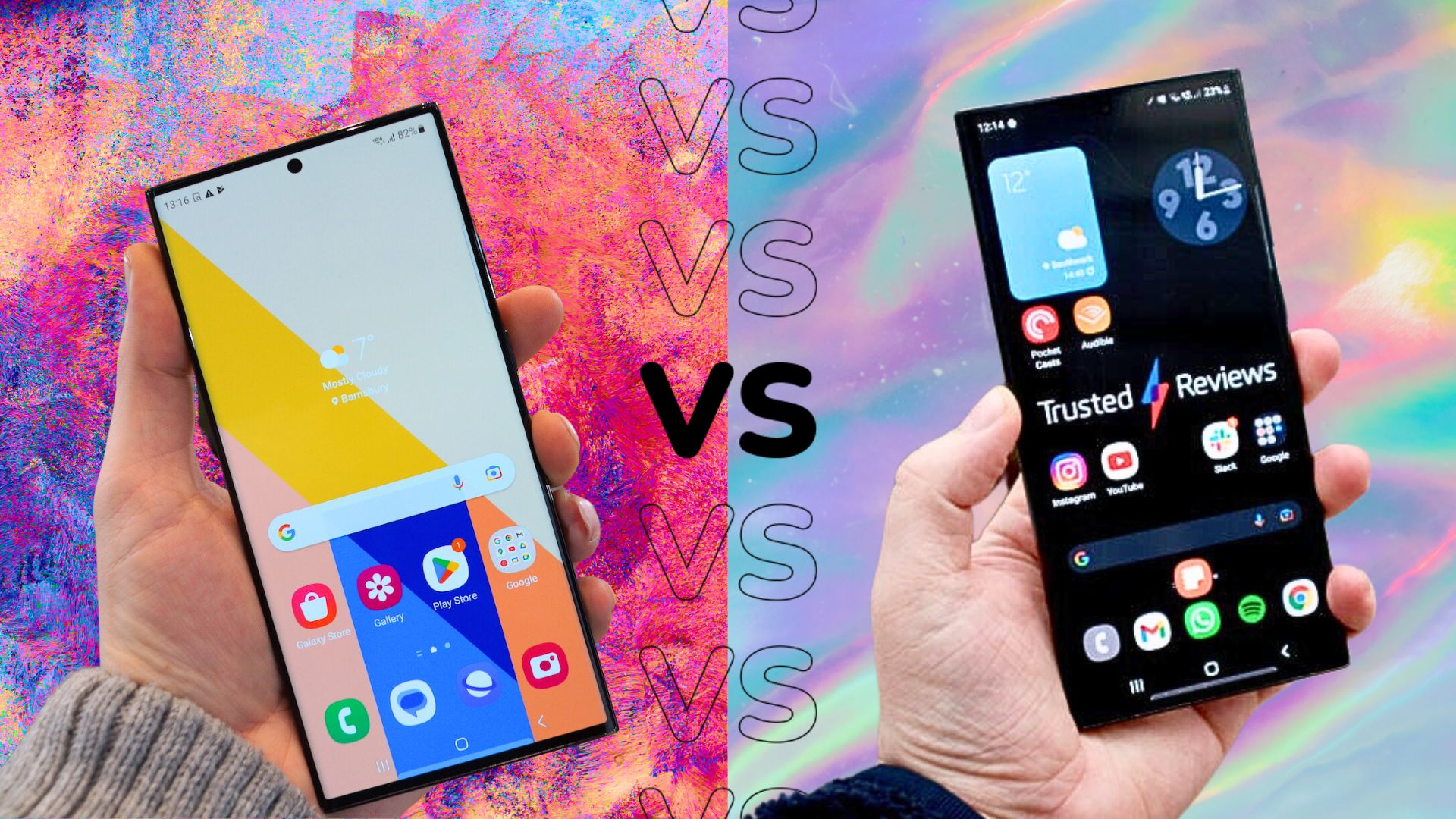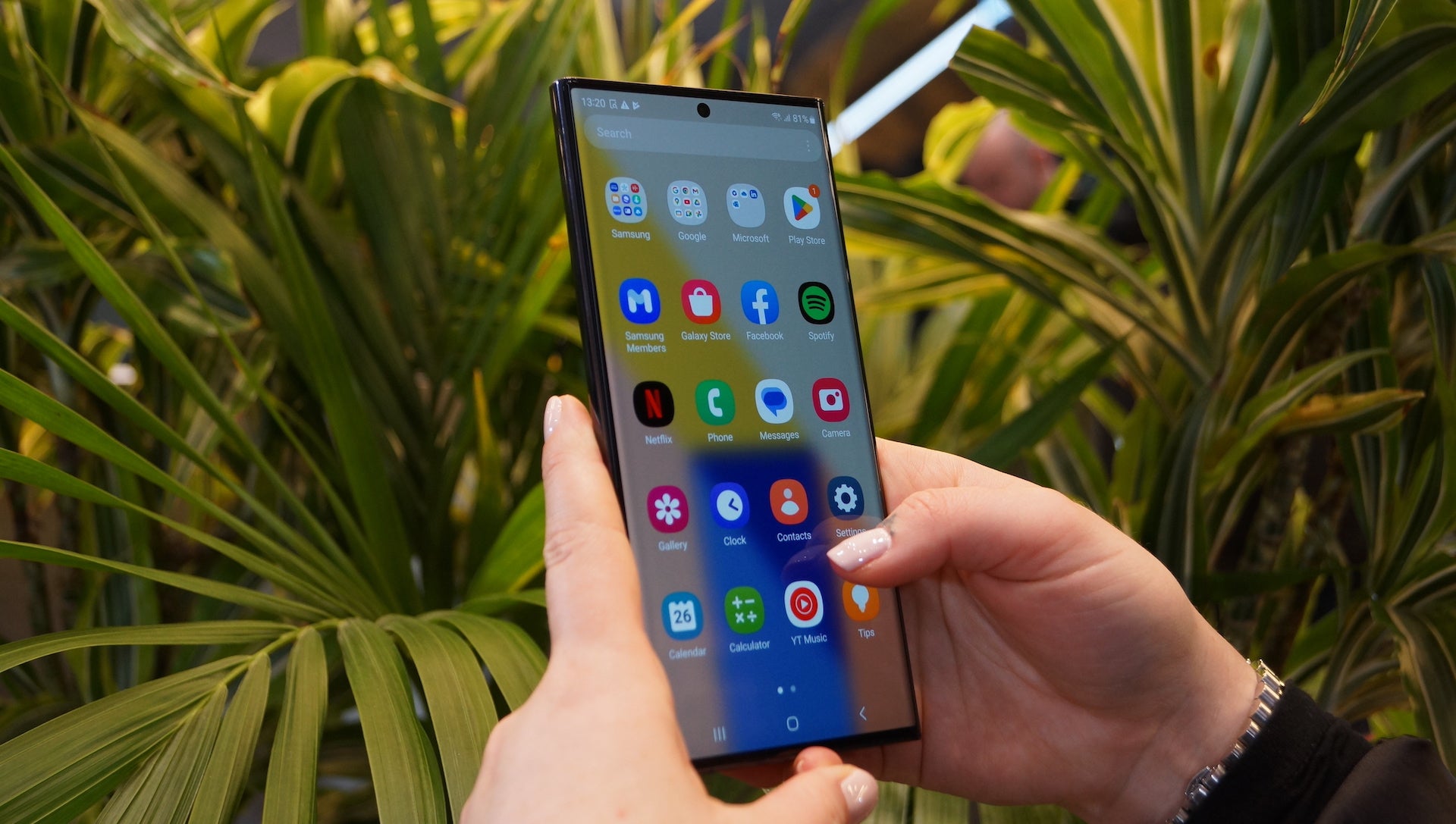Galaxy Book 3 Pro vs MacBook Air M2: Apple or Samsung?
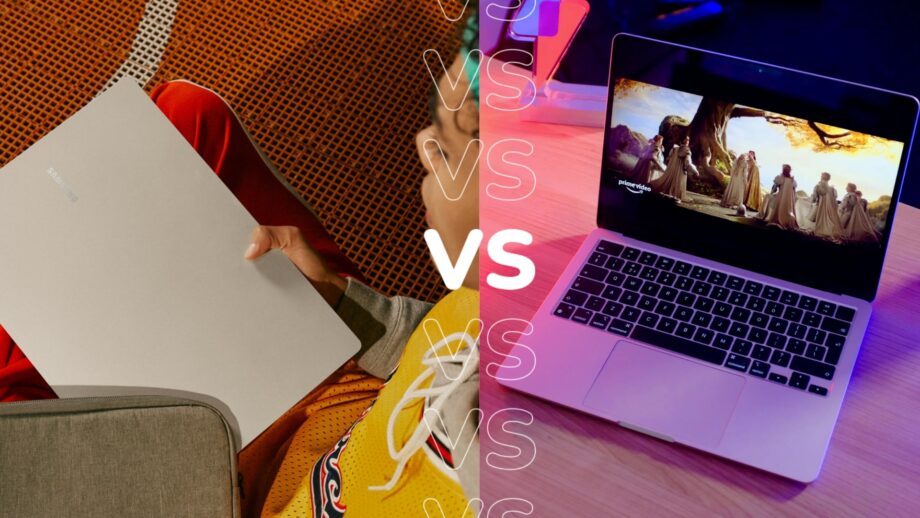
With the release of the latest batch of Galaxy Book 3 laptops, we want to find out how they stack up against Apple’s MacBook line.
Samsung has surprised everyone with the release of four new laptops in the Galaxy Book 3 lineup. With a batch of new laptops on the market, we want to see how the latest Galaxy Book 3 Pro compares to one of the most popular laptops – the MacBook Air M2.
The Galaxy Book3 Pro will be available to buy in the UK by February 17 2023 and is being touted as a super-fast lightweight laptop that can handle productivity tasks with ease. The MacBook Air M2 is also a lightweight device but is aimed at creative professionals due to its impressive GPU.
With this in mind, how does the Galaxy Book3 Pro compare to the MacBook Air M2? We’re going to be running through all the key differences so you can decide which laptop is best for you.
Apple Silicon vs Intel
The MacBook Air M2, and many of the recent releases from Apple, feature Apple Silicon chips since the company made the move away from Intel processors. The MacBook Air features the M2 chipset, which is the latest generation of chips from the company, coming after the M1 series.
This laptop can be configured with two M2 chips, with the most powerful coming with an 8-core CPU, 10-Core GPU and a 16-core Neural Engine, and the other chip coming with an 8-core GPU. Our testing with the M2 chip proves how powerful it is, with 4K video editing in Adobe’s Premiere Pro and Apple’s Final Cut Pro being easily achievable, with smooth scrolling through timelines.
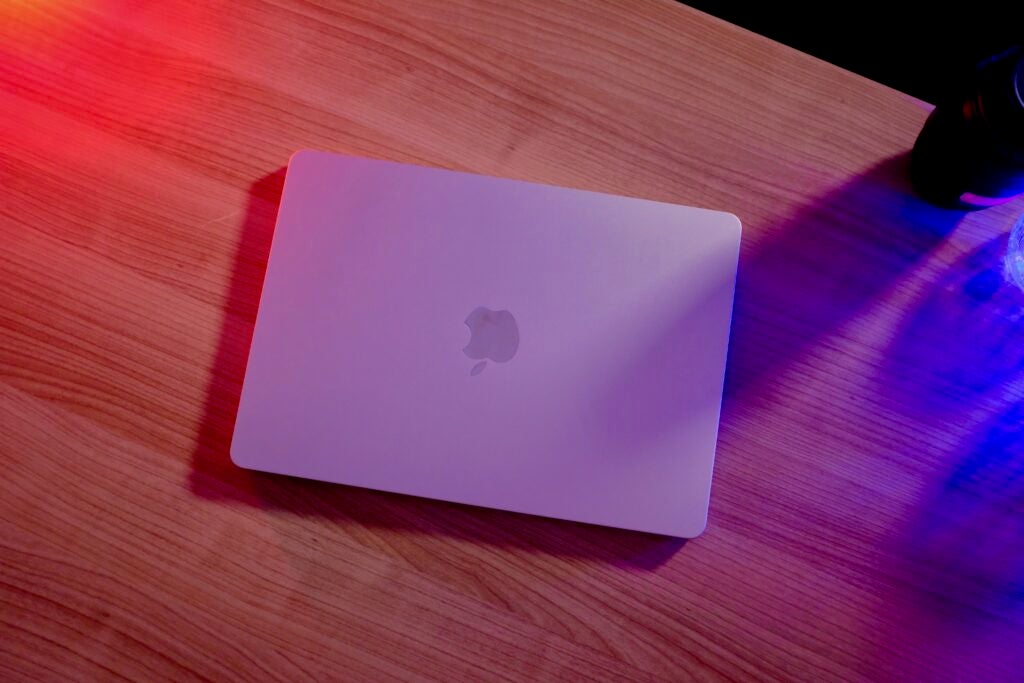
The Galaxy Book 3 Pro comes kitted out with a 13th-generation Intel Core processor in either an i5 or i7 configuration. We cannot claim which chip comes out on top in terms of performance yet, however, the fact that the Galaxy Book 3 Pro cannot be configured up to an i9 processor means that it may fall short in comparison to the M2 chipset.
However, both of these chips should be more than serviceable for productivity tasks and general workloads so you may find that both processors work for you.
MacBook Air can be configured with more RAM and storage
The MacBook Air has been designed with creatives in mind, so the company offered as much RAM and storage as possible on such a small device. The unified memory can be configured as high as 16GB or 24GB, with a base of 8GB, while the Galaxy Book 3 Pro can go as high as 16GB LPDDR5 RAM.
In terms of storage, the Samsung solution can be configured with either 256GB or 512GB of PCle storage. The MacBook Air M2 has the option of 512GB, 1TB or 2TB, putting it head and shoulders over the Galaxy Book3 Pro.
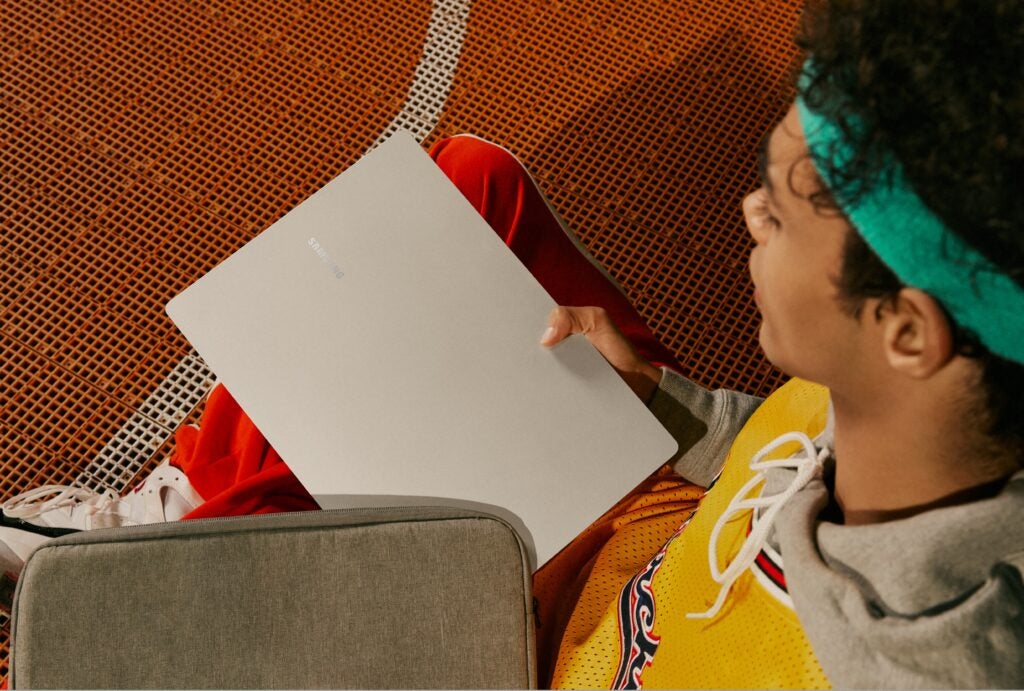
While the increased storage will inflate the price, it is much better suited to those engaging in creative tasks or downloading large files, such as movies or media. The Galaxy Book3 Pro does come with a MicroSD slot, meaning that the storage can be upgraded if need be, but it may be simpler for some people to opt for the 1TB or 2TB model from Apple.
Apple Silicon vs Nvidia
In the same vein as Intel, Apple no longer uses AMD graphic cards inside its laptops, since the M1 and M2 series of chips operate include both CPUs and GPUs. As previously mentioned, the MacBook Air M2 can be configured with a 10-core GPU or an 8-core GPU.
The MacBook Air M2 is more than capable of taking on intensive graphical tasks since it is aimed at creative professionals. While the base M2 chip is not as powerful as some of the later entries, such as the M2 Pro or M2 Max, it should be more capable than what’s included in the Galaxy Book3 Pro: Intel Iris Xe Graphics.
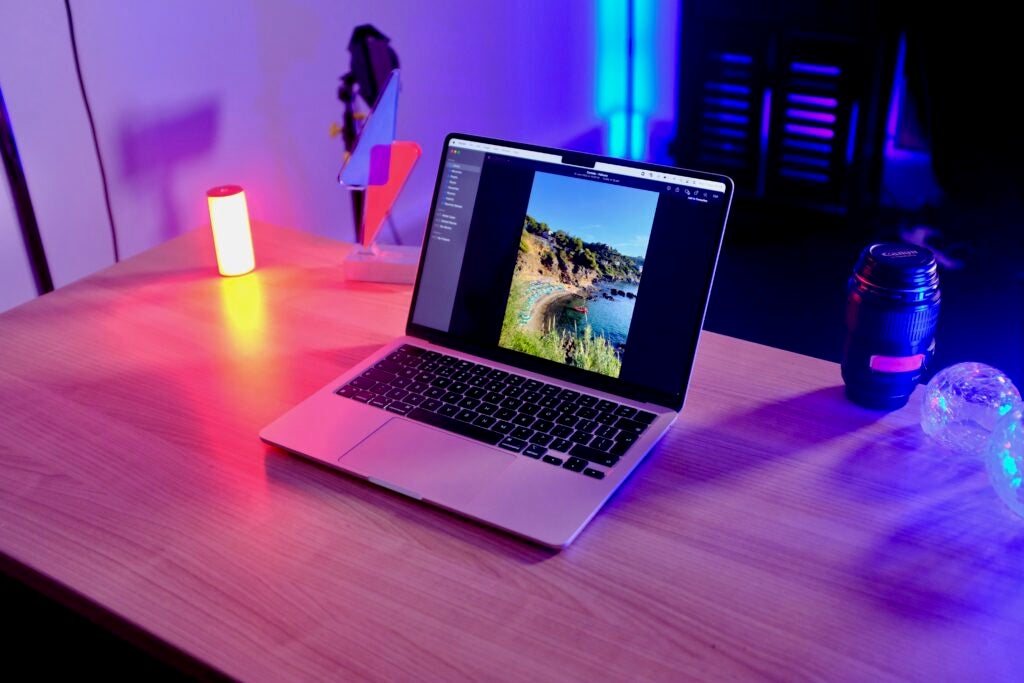
Intel Iris Xe Graphics is not targeted at people who are creative professionals or gamers, as it is simply the base GPU configuration for Intel laptops. If you’re simply looking to engage in productivity work and watch movies, this GPU will not hold you back, but the MacBook Air M2 is by far more suited for creative professionals and will be able to handle large workloads with ease.
The Galaxy Book3 Pro features an AMOLED display
The Galaxy Book3 Pro comes in two sizes, 14 inches and 16 inches. Both models come with an AMOLED panel with a 120Hz adaptive refresh rate with a quoted brightness of 400 nits. An AMOLED panel should provide a bright and vibrant experience, with a key benefit being that it is kinder to the battery than LCD.
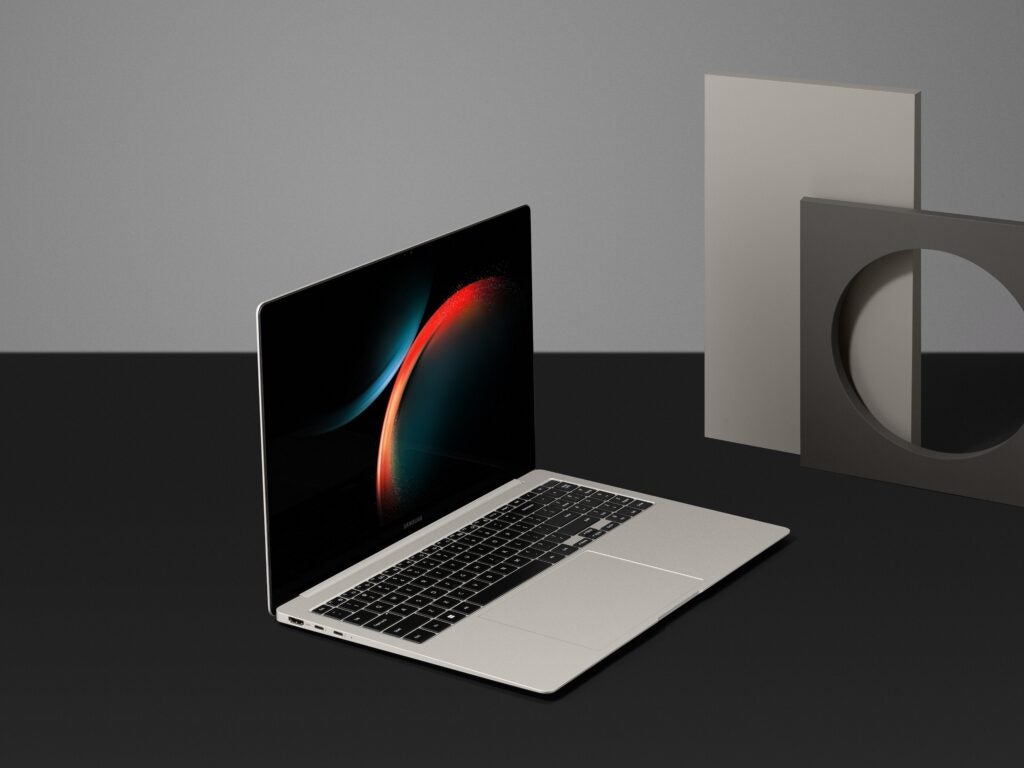
The MacBook Air M2 comes with a 13.6-inch LED-backlit display, with a quoted brightness of 500 nits and a 60Hz refresh rate. While LED will still provide a very smooth and sharp experience, it will likely be edged out by the Galaxy Book3 Pro, especially since it provides a higher refresh rate than Apple which is also adaptive.
An adaptive refresh rate means that the display will increase or decrease the refresh rate depending on the task at hand. For example, reading a static block of text does not require much power so the refresh rate can drop, but it will hit up to 120Hz during gameplay or if you’re scrolling through long articles and jumping in and out of apps.


